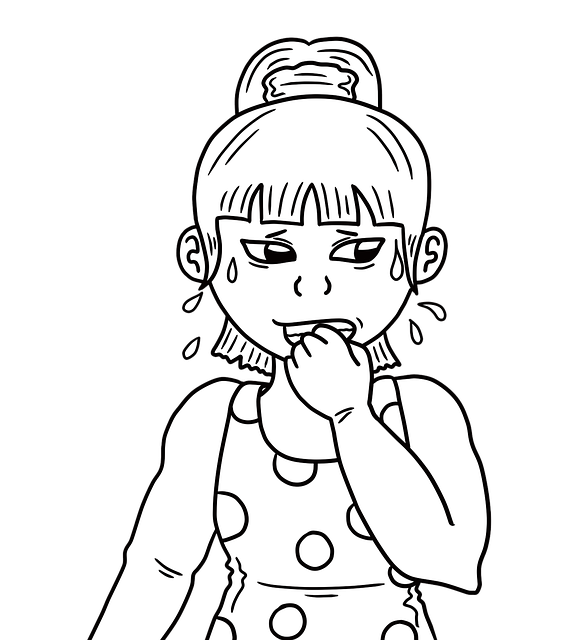Social Support: Key to Professional Anxiety Treatment Success

Social support is crucial for managing anxiety disorders, enhancing professional anxiety treatment……..
Anxiety, a universal human experience, manifests in various forms, from mild worry to debilitating disorders. This article delves into the intricate world of anxiety treatment and management (AT&M), exploring strategies, trends, and innovations shaping this critical field. AT&M is not merely a practice but a holistic approach that considers biological, psychological, and social factors influencing anxiety. By understanding its multifaceted nature, we can appreciate the diverse methods employed to alleviate suffering and enhance well-being. This article aims to equip readers with knowledge about the latest developments, challenges, and future directions in AT&M, fostering informed discussions and potential solutions.
At its essence, Anxiety Treatment and Management encompasses a range of techniques, therapies, and interventions designed to prevent, assess, and treat anxiety disorders. It involves a comprehensive approach that may include psychological counseling, medication, lifestyle modifications, and alternative therapies. The core components can be broken down as follows:
Psychotherapy: This is a cornerstone of AT&M, offering various evidence-based approaches such as Cognitive Behavioral Therapy (CBT), Dialectical Behavior Therapy (DBT), Exposure Therapy, and Mindfulness-Based Therapies. These modalities help individuals identify and change unhelpful thought patterns and behaviors contributing to anxiety.
Medications: Prescribed by healthcare professionals, anxiolytics, and antidepressants are commonly used to manage anxiety disorders. Selective Serotonin Reuptake Inhibitors (SSRIs) and Benzodiazepines are examples of medication classes that target neurotransmitters in the brain to reduce anxiety symptoms.
Lifestyle Interventions: These include promoting healthy habits such as regular exercise, mindfulness practices, stress management techniques, adequate sleep hygiene, and a balanced diet. Such lifestyle modifications can significantly impact anxiety levels and overall well-being.
Alternative and Complementary Therapies: AT&M also explores non-conventional approaches like acupuncture, yoga, meditation, art therapy, and music therapy. These therapies offer additional tools to manage anxiety and may be integrated into comprehensive treatment plans.
The field of anxiety treatment has evolved over centuries, reflecting advancements in science and understanding of mental health. Early approaches often relied on spiritual or philosophical remedies, with ancient cultures employing various herbs and rituals for their calming effects. The modern era brought about significant progress with the development of psychoanalysis by Sigmund Freud, which focused on exploring unconscious thoughts and experiences.
A pivotal moment arrived in the late 20th century with the emergence of cognitive-behavioral therapy (CBT), backed by extensive research demonstrating its effectiveness in treating various anxiety disorders. This evidence-based approach gained widespread acceptance, forming the foundation for many contemporary AT&M strategies. Over time, the integration of new technologies, research findings, and cultural insights has further refined and expanded the scope of anxiety management.
Anxiety disorders are a global concern, affecting individuals across diverse cultures and societies. According to the World Health Organization (WHO), around 284 million people worldwide suffer from an anxiety disorder, making it one of the most prevalent mental health challenges. AT&M plays a critical role in addressing this growing need, with countries adopting various strategies to improve access to quality care.
The impact of AT&M varies across regions, influenced by cultural norms, healthcare systems, and resource availability:
North America and Europe: These regions have well-established mental health services, with robust insurance coverage for anxiety treatments. Countries like the United States and the UK lead in research and technology, offering cutting-edge therapies and digital interventions.
Asia-Pacific: The region presents unique challenges due to cultural taboos surrounding mental health. However, growing awareness and increased investment are driving progress. China, for instance, has implemented national strategies to improve access to mental health services, including AT&M.
Low-and Middle-Income Countries: Limited resources and infrastructure pose significant obstacles to implementing effective AT&M programs. Global health initiatives focus on integrating mental health services into primary care settings, ensuring affordability and accessibility.
Several trends are shaping the future of anxiety treatment and management:
Digital Health Interventions: The rise of mobile applications, online therapy platforms, and virtual reality (VR) therapies offers accessible and cost-effective solutions, especially in regions with limited resources. These technologies enable remote access to care, improving reach and convenience.
Personalized Medicine: Advancements in neuroscience and genomics are paving the way for personalized anxiety treatments tailored to individual needs. This approach considers genetic predispositions and brain differences to optimize therapy outcomes.
Integrated Care Models: There is a growing emphasis on integrating AT&M with primary care services, ensuring comprehensive and coordinated care for patients with comorbid conditions. This collaborative approach improves overall health outcomes.
Anxiety disorders impose substantial economic burden on individuals, families, and societies. Direct costs include healthcare expenses for diagnosis and treatment, while indirect costs arise from lost productivity, disability, and reduced quality of life. The global economic impact is estimated to be in the billions of dollars annually, highlighting the need for cost-effective and accessible AT&M solutions.
Access to AT&M varies across healthcare systems worldwide. In countries with universal healthcare, anxiety treatments are often covered, ensuring broader access. Conversely, in private insurance-based systems, coverage may be limited, affecting affordability. Understanding these dynamics is crucial for developing sustainable AT&M models.
Research demonstrates that investing in AT&M can lead to significant cost savings in the long term. Effective anxiety management can reduce healthcare utilization, decrease absenteeism from work or school, and improve overall productivity. Governments and insurance providers are increasingly recognizing the value of AT&M as a cost-effective strategy for managing chronic conditions.
Lifestyle interventions form a cornerstone of AT&M, focusing on empowering individuals to take an active role in their mental health. Research consistently highlights the positive impact of:
Regular Exercise: Physical activity releases endorphins, improves mood, and reduces anxiety symptoms. It also promotes better sleep and overall well-being.
Balanced Diet: Nutritional deficiencies can contribute to anxiety, making a diet rich in essential vitamins and minerals crucial. Foods containing omega-3 fatty acids, magnesium, and B vitamins are particularly beneficial for brain health and anxiety management.
Quality Sleep: Adequate sleep is vital for emotional regulation and stress response. Techniques like cognitive behavior therapy for insomnia (CBT-I) can help individuals improve sleep hygiene.
Stress Management: Practicing mindfulness, meditation, or engaging in hobbies reduces stress levels, preventing anxiety from escalating.
Educating individuals about their role in managing anxiety is essential. Self-care strategies empower people to make informed choices and take preventive measures:
Mindfulness Practices: Mindfulness meditation, deep breathing exercises, and yoga can help individuals stay grounded in the present moment, reducing anxious thoughts.
Cognitive Reframing: Encouraging individuals to challenge negative thought patterns and replace them with more realistic, positive alternatives is a powerful tool for self-management.
Support Groups: Peer support groups provide a safe space for sharing experiences and strategies, fostering a sense of community and collective resilience.
While traditional Western medicine forms the basis of AT&M, alternative and complementary therapies offer unique benefits, especially as adjunctive treatments. Here are some notable examples:
Acupuncture: This ancient Chinese practice involves inserting thin needles into specific body points to promote relaxation and balance. Research suggests it can reduce anxiety symptoms, lower blood pressure, and improve overall well-being.
Yoga: Incorporating yoga poses, breathing exercises, and meditation can enhance flexibility, strength, and mental clarity. Regular practice has been linked to reduced stress, improved mood, and better sleep.
Art and Music Therapy: These creative approaches use artistic expression as a therapeutic tool, helping individuals explore emotions, improve communication, and develop coping strategies. They are particularly beneficial for children and adolescents who may find it challenging to articulate their feelings verbally.
The integration of alternative therapies requires careful consideration and clinical evidence. Some healthcare systems have established guidelines for their safe and effective use as complementary treatments. As research continues, we can expect a growing body of evidence supporting these modalities, leading to broader acceptance in AT&M protocols.
Despite significant progress, challenges remain in ensuring equitable access to AT&M. Stigma, cultural taboos, limited healthcare infrastructure, and financial barriers continue to hinder care-seeking behaviors, especially in underserved communities. Addressing these issues requires a multi-faceted approach:
Public Awareness Campaigns: Raising awareness about anxiety disorders and the availability of treatments can dispel myths and reduce stigma.
Cultural Sensitivity Training: Healthcare providers should receive training to deliver AT&M services sensitively and effectively across diverse cultural backgrounds.
Telehealth Services: Expanding access through telemedicine and digital health platforms can bridge the gap in remote areas, ensuring care for underserved populations.
The future of AT&M lies in personalized approaches leveraging technological advancements:
Genomics and Neuroimaging: Understanding individual differences in brain structure and function will enable more tailored treatment plans.
Digital Therapeutics: Mobile apps, virtual reality (VR), and gamified interventions offer innovative ways to deliver AT&M, especially for younger demographics.
Artificial Intelligence (AI): AI can analyze vast amounts of data to predict anxiety outcomes, recommend treatments, and monitor progress, enhancing the efficiency and effectiveness of AT&M.
Interdisciplinary collaboration is crucial for advancing AT&M. Psychologists, psychiatrists, primary care providers, educators, researchers, and policymakers must work together to:
Integrate Knowledge: Combining expertise from diverse fields ensures a holistic approach to understanding and managing anxiety disorders.
Develop Comprehensive Strategies: Collaboration can lead to the creation of innovative programs and policies that address social determinants of health, education, employment, and healthcare systems.
Promote Research: Joint research efforts can fill knowledge gaps and drive evidence-based practice in AT&M.
Anxiety disorders are prevalent, complex conditions that impact individuals across the lifespan. Advancements in AT&M offer hope and promise for improved outcomes. By embracing a multi-faceted approach, integrating lifestyle modifications, alternative therapies, and leveraging technology, we can enhance accessibility, effectiveness, and sustainability of care. The journey towards better mental health is a collective effort, requiring dedication, innovation, and collaboration across disciplines and communities worldwide.

Social support is crucial for managing anxiety disorders, enhancing professional anxiety treatment……..

Cognitive Behavioral Therapy (CBT) is an effective approach to anxiety treatment and management by t…….

Anxiety disorders benefit from holistic approaches, with diet playing a significant role. Neuroscien…….

Anxiety attacks, triggered by stress, relationships, life changes, trauma, and health issues, can be…….

Anxiety relief therapy is essential when symptoms persist over two weeks, impacting daily life. Reco…….

Anxiety and worry significantly impair daily life and well-being. Journaling, a powerful tool, helps…….

Journaling is a powerful therapy for anxiety attacks, offering a safe space for self-exploration and…….

The gut-brain connection is a growing focus in anxiety counseling services, with research showing th…….

Regular exercise effectively manages anxiety symptoms by releasing neurotransmitters like serotonin…….

Cognitive Behavioral Therapy (CBT) is an effective approach for managing anxiety symptoms by identif…….